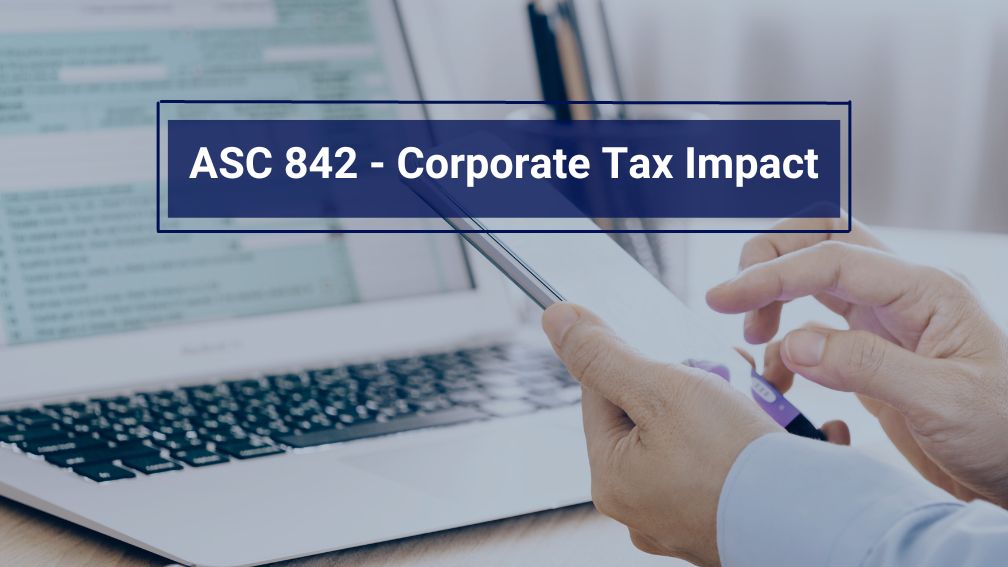The Impact of ASC 842 on Corporate Taxes
Experienced accountants and CPA firms understand the importance of following the best accounting practice for your organization’s hefty lease portfolio. If your company has tangible leased assets such as real estate, vehicle, or equipment leases, you’re probably familiar with the new lease accounting standard ASC 842. The topic we will dive into today is the ASC 842 corporate tax impact on your financial statements.
While maintaining long-term compliance with the new standard is important for financial reporting purposes, it’s also crucial to understand the tax implications of ASC 842. By doing so, you can make informed decisions about tax planning and strategy, minimize tax liabilities, and stay compliant with tax laws and regulations. In this blog post, we’ll explore the key tax impacts of ASC 842 and how they may affect your company’s financial statements, tax returns, and tax planning.
Tax Impacts of ASC 842
ASC 842 is a new lease accounting standard that requires lessees to recognize leases on their balance sheets as right-of-use (ROU) assets and lease liabilities. The standard has significant tax implications, which can affect your company’s financial statements and tax returns. Here are some key tax impacts of ASC 842:
- Tax implications of the right-of-use asset and lease liability: The recognition of ROU assets and lease liabilities can affect the tax basis of the asset and liability, which can affect the timing and amount of tax deductions and depreciation. For example, the tax basis of the ROU asset may be higher or lower than the book value, depending on the tax treatment of lease incentives, initial direct costs, and impairment losses. Similarly, the tax basis of the lease liability may be higher or lower than the book value, depending on the tax treatment of lease payments and discount rates.
- Changes in the timing and amount of deductions: ASC 842 may change the timing and amount of tax deductions for lease payments, lease incentives, and termination fees. For example, under the previous standard ASC 840, some lease payments were deductible as rent expense, while others were deductible as interest expense. Under ASC 842, all lease payments are recognized as lease expense, amortization expense or interest expense. This change can affect the timing and amount of tax deductions for leases, as well as the effective tax rate.
- Impact on tax planning and strategy: ASC 842 may require companies to rethink their tax planning and strategy for assets within their lease portfolio. For example, companies may need to consider the tax implications of lease versus buy decisions, lease renewal or termination, and leasehold improvements. They may also need to coordinate their tax planning with their financial reporting and disclosure requirements.
Tax Planning for ASC 842
ASC 842 may result in higher tax liabilities for some companies, due to the recognition of ROU assets and lease liabilities on the balance sheet. However, companies can mitigate these tax liabilities through careful tax planning and structuring.
When structuring lease agreements, negotiating lease terms, and determining the appropriate discount rate for lease payments, there are several tax considerations to keep in mind for your accounting needs.
Firstly, lease agreements must comply with the tax rules for deductibility of lease payments, lease incentives, and termination fees. If these payments do not qualify for immediate deductions, they may need to be capitalized and amortized over the lease term, which can affect the timing and amount of tax deductions.
Secondly, the lease structure can affect the allocation of tax benefits and risks between the lessor and the lessee. For example, a finance lease may allow the lessee to claim depreciation and interest deductions, while an operating lease may allow the lessor to claim these deductions.
Thirdly, the lease term and the lease payments can affect the present value of lease payments and the appropriate discount rate. The discount rate is used to calculate the present value of lease payments, which can affect the amount of ROU assets and lease liabilities recognized on the balance sheet. The appropriate discount rate may depend on the lessee’s incremental borrowing rate or the lessor’s implicit rate.
Finally, leasehold improvements can have tax implications, as they may need to be capitalized and depreciated over the lease term. The lessee may need to consider the tax consequences of making improvements to leased property, and negotiate the lease terms accordingly.
Overall, tax considerations should be an integral part of lease structuring, negotiation, and determination of discount rates, to optimize the tax benefits and comply with the tax rules.
Note, ASC 842 does not impact how leases are treated for federal income tax purposes. Leases will either be treated as a true tax lease or a non-tax lease. A non-tax lease assumes that the risks and rewards of ownership are with the lessee. Tax deductions such as depreciation and interest expenses are booked by the lessee, while the lessor recognizes interest income.
In summary, ASC 842 has significant tax implications for companies that lease assets. Understanding these tax impacts is crucial for effective tax planning, compliance with tax laws and regulations, and accurate financial reporting. The key tax impacts of ASC 842 include changes in lease accounting rules, impact on tax deductions and depreciation, impact on financial statements and tax returns, recognition of ROU assets and lease liabilities, and impact on tax planning and strategy. To help with lease data management, it’s wise to find a leading lease accounting vendor with access to their finance professionals.
A good lease accounting software could ensure you’re in compliance throughout the entire lease lifecycle, assist with maintaining finance data integrity, and ensure you meet ASC 842 and IFRS 16 compliance. Occupier’s Lease Accounting Product helps you with the latest lease accounting compliance standards and automates your journal entries, lease data management, document management, amortization schedules, and more. If you’re ready to get to audit-ready compliance, schedule a meeting.
